"Fitch Ratings" Expressbank-ın proqnozunu pozitivə yüksəltdi
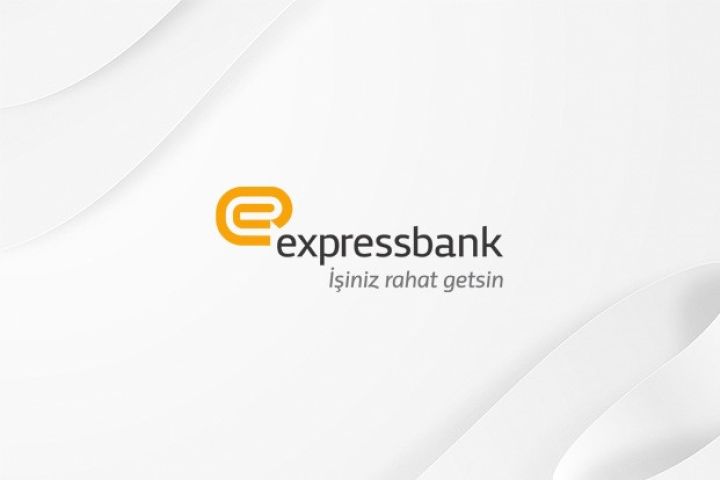 Beynəlxalq reytinq agentliyi "Fitch Ratings" Expressbank-ın reytinq proqnozunu "Stabil"dən "Pozitiv"ə yüksəldib. Həmçinin, Bankın reytinqi bir daha "B" səviyyəsində təsdiqlənib.
Beynəlxalq reytinq agentliyi "Fitch Ratings" Expressbank-ın reytinq proqnozunu "Stabil"dən "Pozitiv"ə yüksəldib. Həmçinin, Bankın reytinqi bir daha "B" səviyyəsində təsdiqlənib.
Agentlik reytinq proqnozunu Bankın aktivlərinin keyfiyyəti, gəlirliyi və kapital buferinin gücü ilə əlaqələndirir. Hesabatda Bankın kredit portfelinin artım dinamikası, dollarizasiyanın aşağı olması, gəlirliyi də vurğulanıb. Hesabat haqqında daha ətraflı məlumat ilə Bankın rəsmi saytından tanış ola bilərsiniz.
Qeyd edək ki, Expressbank-ın 2023-cü ilin III rübündə xalis mənfəəti 9.9 milyon manat olub, aktivləri isə yarım milyarda yaxınlaşıb.
Expressbank Bakı və regionlarda 15 filialı ilə fəaliyyət göstərir. Bankın məhsul və xidmətləri ilə www.expressbank.az saytından, 132 Məlumat Mərkəzindən və ya sosial şəbəkələrdəki rəsmi səhifələrindən tanış ola bilərsiniz.
XXX
Fitch Revises Expressbanks Outlook to Positive; Affirms at B
Fitch Ratings has revised Expressbank Open Joint Stock Companys (EB) Outlook to Positive from Stable. Fitch has also affirmed the banks Viability Rating and Long-Term Issuer Default Ratings (IDRs) at B. A full list of rating actions is below.
KEY RATING DRIVERS
EBs Long-Term IDRs are derived from its Viability Rating (VR) of b, which is in line with the implied VR. The Positive Outlook on the banks IDRs reflects our expectations that EBs asset quality, profitability and capital buffer are likely to remain strong in the medium term, underpinned by the improving operating environment for Azerbaijani banks.
Banking Sector Improving: Fitch has revised the Outlook on the b+ operating environment score for Azerbaijani banks to Positive from Stable. This captures our expectation that financial stability in the highly cyclical Azerbaijani economy will continue to improve, due to the stronger financial profiles of domestic banks and tighter regulatory oversight. The latter also results in an ongoing moderation of legacy asset-quality risks in the banking sector.
Small Bank, Retail Lending Focus: EB is a small privately owned bank, ranked 17th out of 24 in Azerbaijan, with a 1% market share by total assets at end-1H23. The bank runs a universal business model and is focused on retail lending (end-1H23: 70% of gross loans). The remaining portion of the loan book mainly includes exposures to micro-, small- and medium-sized enterprises (MSME).
Rapid Loan Growth, Low Dollarisation: EBs loan growth averaged 19% in 2021-1H23, outpacing the sectors 15%. We expect the banks loan book to grow rapidly in 2023-2024, with a continued focus on unsecured consumer lending and gradual expansion in microlending to individual entrepreneurs. Loan dollarisation was a marginal 7% of gross loans at end-1H23, well below the sector average of 20%.
Reduced Impaired Loans, Worse Coverage: The banks impaired loans (Stage 3 loans under IFRS 9) decreased to a low 2.6% of gross loans at end-2022 (end-2021: 5.4%), supported by their work-out and write-offs. The coverage of impaired loans by total loan loss allowances reduced to 64% at end-2022 (end-2021: 76%), which we view as weak, given the banks risk profile. We expect the banks asset quality to remain adequate, with the impaired loan ratio below 5% in 2023-2024, underpinned by loan growth and some write-offs.
Good Profitability: EBs performance was strong in 2022, with operating profit/risk-weighted assets (RWA) at a high 4.8% in 2022 (2021: 4.4%). This was largely driven by a wide net interest margin (2022: 10.9%) and limited loan impairment charges (LICs). EB reported a notable AZN6.3 million net profit in its prudential accounts in 1H23, translating into an annualized return on average equity of 10% (2022: 10%). We expect an increase in LICs in 2023-2024 to weigh on the banks performance, but the operating profit/RWA ratio to remain reasonable at 2.5%-3%.
High Capital Buffer: The banks end-1H23 regulatory Tier 1 (26%) and total capital (29%) ratios were comfortably above the statutory minimums of 5% and 10%. We expect EBs capital buffer to remain solid, despite Fitch Core Capital ratio (end-2022: 33%) reducing to 24% by end-2024, owing to considerable RWA growth and material dividend payments.
Wholesale Funding, Modest Liquidity Buffer: The bank is largely funded by customer deposits (end-1H23: 54% of total liabilities), but it has high reliance on wholesale funds (39%). These are mostly cheap long-term loans from state development institutions (end-1H23: 22% of total liabilities) and short-term repurchase obligations (12%). At end-1H23, EBs liquid assets, excluding pledged securities, equalled a modest 12% of total assets and covered about 30% of customer deposits.
RATING SENSITIVITIES
Factors that Could, Individually or Collectively, Lead to Negative Rating Action/Downgrade
We would be likely to revise the Outlook on EB to Stable from Positive as a result of material asset-quality deterioration leading to a substantial increase in impairment charges and lower operating profitability compared to our projections. In addition, the Outlook could be revised to Stable if rapid loan growth and/or dividend pay-outs result in weaker capitalisation, with the Fitch Core Capital ratio falling significantly below 20%.
Factors that Could, Individually or Collectively, Lead to Positive Rating Action/Upgrade
An upgrade of the banks IDRs and VR would require further improvements in the local operating environment. This should also be accompanied by an extended record of reasonable asset quality, with the impaired loan ratio below 5%, and robust profitability, with the operating profit/RWA ratio exceeding 2%.
An upgrade of Azerbaijans sovereign rating is not likely to result in immediate upgrade of the banks ratings.
VR ADJUSTMENTS
The operating environment score of b+ is below the bb category implied score because of the following adjustment reasons: regulatory and legal framework (negative) and financial market development (negative).
The capitalisation & Leverage score of b+ is below the bb category implied score because of the following adjustment reason: size of capital base (negative).
REFERENCES FOR SUBSTANTIALLY MATERIAL SOURCE CITED AS KEY DRIVER OF RATING
The principal sources of information used in the analysis are described in the Applicable Criteria.




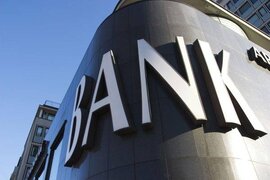


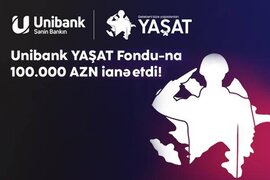
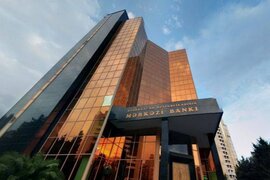
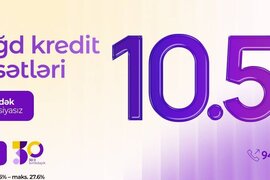
 Ən çox gəlir gətirən onlayn bizneslər
Ən çox gəlir gətirən onlayn bizneslər Dünyanın ən dəyərli avtomobil şirkətləri
Dünyanın ən dəyərli avtomobil şirkətləri Dünyanın ən çox maaş verən şirkətləri
Dünyanın ən çox maaş verən şirkətləri Start-up nədir?
Start-up nədir? ABŞ gəmiqayırma və dəniz nəqliyyatı üzrə Çinlə danışıqlara başlayır
ABŞ gəmiqayırma və dəniz nəqliyyatı üzrə Çinlə danışıqlara başlayır Ağ Ev Nvidia-nın B30A çipini Çinə satmasını qadağan edib
Ağ Ev Nvidia-nın B30A çipini Çinə satmasını qadağan edib Mask: "Hazırda beynim çiplərlə doludur"
Mask: "Hazırda beynim çiplərlə doludur" "Süni intellekt sektoru üçün federal xilasetmə paketi olmayacaq"
"Süni intellekt sektoru üçün federal xilasetmə paketi olmayacaq" Azərbaycan 113 milyon dollara yaxın mebel idxal edib
Azərbaycan 113 milyon dollara yaxın mebel idxal edib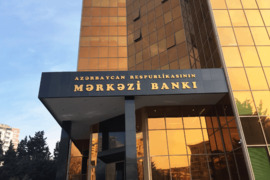 Mərkəzi Bank iki bankı cərimələdi
Mərkəzi Bank iki bankı cərimələdi CV hazırlayarkən buraxılan 5 səhv
CV hazırlayarkən buraxılan 5 səhv Layihə menecmenti nədir?
Layihə menecmenti nədir? Dünyanın əh bahalı brendləri - TOP-10
Dünyanın əh bahalı brendləri - TOP-10 Onlayn biznes ideyaları
Onlayn biznes ideyaları Onlayn biznes növləri
Onlayn biznes növləri